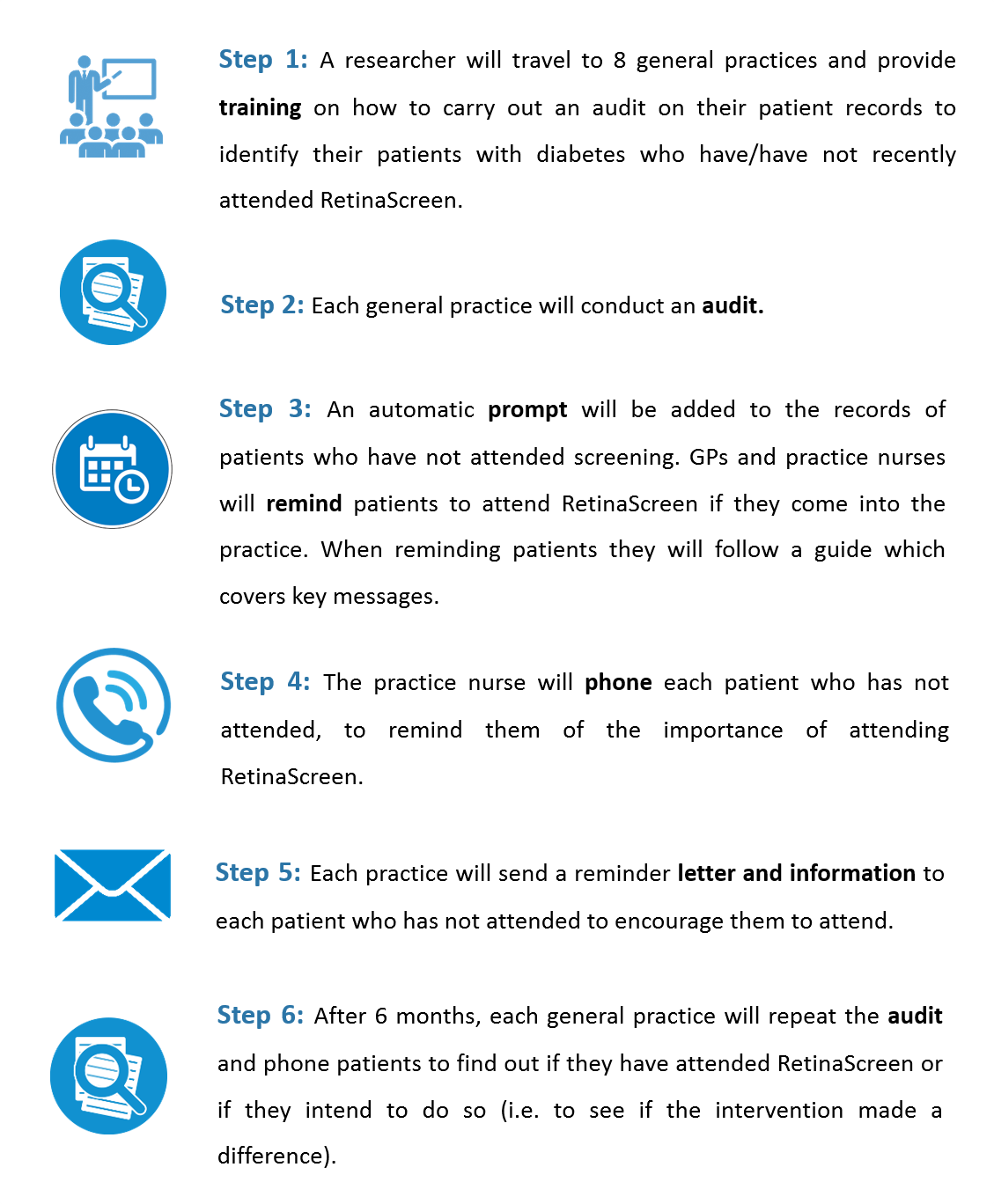Our Research

About IDEAs
The IDEAs study investigated the feasibility of an intervention in primary care to increase diabetic retinopathy screening attendance. Diabetic retinopathy is a serious and common condition that affects the sight of people with diabetes and can cause blindness. With regular screening, retinopathy can be picked up earlier and treated, which can help prevent or delay sight loss.
Between July 2019 and July 2020 we carried out a pilot trial of the IDEAs intervention in general practices across Ireland. This was a 2-year study funded by the Health Research Board (HRB) under the Definitive Interventions and Feasibility Awards (DIFA) scheme.
What is diabetic retinopathy?
Diabetic retinopathy is a serious and common condition that affects the sight of people with diabetes and can cause blindness. In Ireland, retinopathy affects 8% of the population over 50 years with type 2 diabetes, that’s approximately 10,000 people. It is one of the leading causes of blindness among adults of working age. More information on retinopathy is available here.
Why is screening important?
With regular screening retinopathy can be picked up earlier and treated, which can help prevent or delay sight loss. The success of screening is dependent on people attending when they are invited. Screening is effective and provided free of charge by the national retinopathy screening programme in Ireland, known as RetinaScreen. You can find the RetinaScreen web site here.
Why are we doing this research?
We want to find a way to improve the uptake of screening. Recent estimates suggest uptake of the national screening programme, RetinaScreen, is 67.2%. As most of the routine management of type 2 diabetes takes place in general practice, it is arguably the best setting for interventions to improve uptake of screening. We have developed an intervention and will examine whether it is a practical and acceptable way of increasing registration for screening by family doctors, and whether it increases screening visits among people with type 2 diabetes.
What does our intervention involve?
Parts of the intervention target practice staff to help them to deliver reminders to patients: training in audit, a practice audit of uptake, electronic prompts on patient records, and practice reimbursement. Other parts are designed to encourage patients to attend screening: Face-to-face, phone and postal reminders along with an information leaflet.

